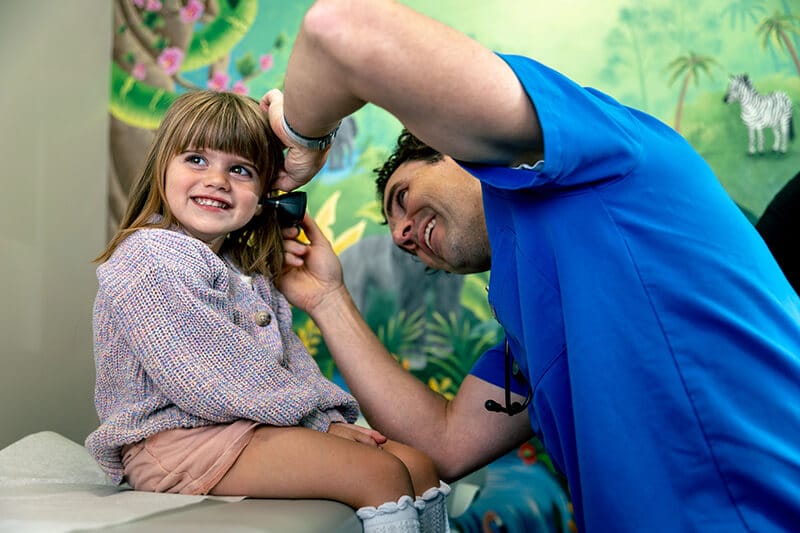While most of us do not enjoy talking about it – everyone poops! Almost everyone has also experienced constipation at various times. Constipation is estimated to affect up to 30% of children and accounts for 3-5% of the visits to our offices.
Stooling patterns can widely vary from person to person, so how do we define constipation?
In infants, their immature nervous system can cause them to bear down but keep their sphincter muscle closed causing them to grunt and become red in the face. Infants’ stooling frequency can also vary from one stool every 7 days to 7 stools per day (or more!). All of this is normal as long as they continue to have soft, watery stools. If babies start passing pebbly, hard stools, or have blood in the stool, they should be seen in the office.
For toddlers, constipation frequently presents around toilet training. As these kids start having control over their bowel movements they may intermittently feel pain while stooling which can lead to withholding behavior. This can lead to a cycle of constipation. Many children are also lacking in their fiber and water consumption. If you notice your child’s stooling frequency has decreased, they are straining to have a bowel movement, or have hard stools – you can start by trying to increase their water intake, focus on the “P” fruits – peaches, pears and prunes. Fiber-rich gummies can also help. After an episode of constipation, it is important for a toddler to maintain soft stools for 1-2 months so that they no longer associate stooling with pain.
As children get older, constipation often presents as chronic abdominal pain. School aged children and high schoolers many times prefer to not stool at school. When this becomes a problem, providing “toilet time” after breakfast can help them take advantage of the gastro-colic reflex to help them stool prior to leaving the house. Similar to toddlers, increasing water and fiber intake is the first step in treatment. On occasion, daily miralax can be used as an adjunct for a few months to break the constipation cycle.
If this is becoming a chronic problem, symptoms are not improving with those at home treatments, or your child starts having blood in the stool, begins vomiting, or suffers from significant pain – it can be helpful for us to evaluate to determine if medication is necessary.
For more information, feel free to give us a call. Additionally, Primary Children’s Hospital has released a great informational video about constipation as well which you can find here – https://www.youtube.com/watch?v=pNagQup0Upg&t=20s&ab_channel=PrimaryChildrens.






